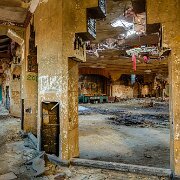
1 Vanity Ballroom, Detroit Michigan
The Vanity Ballroom, located in Detroit, Michigan, is a historic venue that holds a significant place in the city's cultural history. Opened in 1927, it was originally designed as a grand dance hall and a social gathering spot for Detroit's African American community. The venue quickly became renowned for its large, elegant ballroom, where patrons could enjoy live jazz and big band performances. Its ornate interior featured a stunning art deco design with intricate details, including chandeliers, decorative molding, and a spacious dance floor. The Vanity Ballroom became one of the top venues in Detroit during the 1930s and 1940s, regularly hosting some of the era’s most famous musicians, such as Duke Ellington, Ella Fitzgerald, and Cab Calloway. It was a popular destination for dancers and music lovers, contributing to the cultural vibrancy of Detroit's African American communities.
In the decades following its peak, the Vanity Ballroom began to decline, as changes in the music industry and the economy took a toll on the venue's viability. Despite this, the ballroom continued to be a symbol of Detroit's rich musical legacy. By the 1960s, the venue had transitioned to a less glamorous role, hosting more local events and small-scale performances. Although it closed its doors in the late 1970s, the Vanity Ballroom remains a cherished part of Detroit's history. Its significance as a space for cultural expression and its role in the development of jazz and rhythm & blues in the Motor City continue to be remembered by those who fondly recall its days as a premier destination for
The Vanity Ballroom, located in Detroit, Michigan, is a historic venue that holds a significant place in the city's cultural history. Opened in 1927, it was originally designed as a grand dance hall and a social gathering spot for Detroit's African American community. The venue quickly became renowned for its large, elegant ballroom, where patrons could enjoy live jazz and big band performances. Its ornate interior featured a stunning art deco design with intricate details, including chandeliers, decorative molding, and a spacious dance floor. The Vanity Ballroom became one of the top venues in Detroit during the 1930s and 1940s, regularly hosting some of the era’s most famous musicians, such as Duke Ellington, Ella Fitzgerald, and Cab Calloway. It was a popular destination for dancers and music lovers, contributing to the cultural vibrancy of Detroit's African American communities.
In the decades following its peak, the Vanity Ballroom began to decline, as changes in the music industry and the economy took a toll on the venue's viability. Despite this, the ballroom continued to be a symbol of Detroit's rich musical legacy. By the 1960s, the venue had transitioned to a less glamorous role, hosting more local events and small-scale performances. Although it closed its doors in the late 1970s, the Vanity Ballroom remains a cherished part of Detroit's history. Its significance as a space for cultural expression and its role in the development of jazz and rhythm & blues in the Motor City continue to be remembered by those who fondly recall its days as a premier destination for
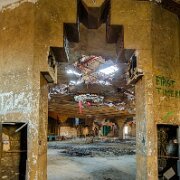
2 Vanity Ballroom, Detroit Michigan
The Vanity Ballroom, located in Detroit, Michigan, is a historic venue that holds a significant place in the city's cultural history. Opened in 1927, it was originally designed as a grand dance hall and a social gathering spot for Detroit's African American community. The venue quickly became renowned for its large, elegant ballroom, where patrons could enjoy live jazz and big band performances. Its ornate interior featured a stunning art deco design with intricate details, including chandeliers, decorative molding, and a spacious dance floor. The Vanity Ballroom became one of the top venues in Detroit during the 1930s and 1940s, regularly hosting some of the era’s most famous musicians, such as Duke Ellington, Ella Fitzgerald, and Cab Calloway. It was a popular destination for dancers and music lovers, contributing to the cultural vibrancy of Detroit's African American communities.
In the decades following its peak, the Vanity Ballroom began to decline, as changes in the music industry and the economy took a toll on the venue's viability. Despite this, the ballroom continued to be a symbol of Detroit's rich musical legacy. By the 1960s, the venue had transitioned to a less glamorous role, hosting more local events and small-scale performances. Although it closed its doors in the late 1970s, the Vanity Ballroom remains a cherished part of Detroit's history. Its significance as a space for cultural expression and its role in the development of jazz and rhythm & blues in the Motor City continue to be remembered by those who fondly recall its days as a premier destination for
The Vanity Ballroom, located in Detroit, Michigan, is a historic venue that holds a significant place in the city's cultural history. Opened in 1927, it was originally designed as a grand dance hall and a social gathering spot for Detroit's African American community. The venue quickly became renowned for its large, elegant ballroom, where patrons could enjoy live jazz and big band performances. Its ornate interior featured a stunning art deco design with intricate details, including chandeliers, decorative molding, and a spacious dance floor. The Vanity Ballroom became one of the top venues in Detroit during the 1930s and 1940s, regularly hosting some of the era’s most famous musicians, such as Duke Ellington, Ella Fitzgerald, and Cab Calloway. It was a popular destination for dancers and music lovers, contributing to the cultural vibrancy of Detroit's African American communities.
In the decades following its peak, the Vanity Ballroom began to decline, as changes in the music industry and the economy took a toll on the venue's viability. Despite this, the ballroom continued to be a symbol of Detroit's rich musical legacy. By the 1960s, the venue had transitioned to a less glamorous role, hosting more local events and small-scale performances. Although it closed its doors in the late 1970s, the Vanity Ballroom remains a cherished part of Detroit's history. Its significance as a space for cultural expression and its role in the development of jazz and rhythm & blues in the Motor City continue to be remembered by those who fondly recall its days as a premier destination for
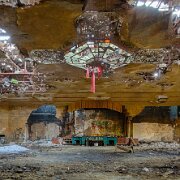
3 Vanity Ballroom, Detroit Michigan
The Vanity Ballroom, located in Detroit, Michigan, is a historic venue that holds a significant place in the city's cultural history. Opened in 1927, it was originally designed as a grand dance hall and a social gathering spot for Detroit's African American community. The venue quickly became renowned for its large, elegant ballroom, where patrons could enjoy live jazz and big band performances. Its ornate interior featured a stunning art deco design with intricate details, including chandeliers, decorative molding, and a spacious dance floor. The Vanity Ballroom became one of the top venues in Detroit during the 1930s and 1940s, regularly hosting some of the era’s most famous musicians, such as Duke Ellington, Ella Fitzgerald, and Cab Calloway. It was a popular destination for dancers and music lovers, contributing to the cultural vibrancy of Detroit's African American communities.
In the decades following its peak, the Vanity Ballroom began to decline, as changes in the music industry and the economy took a toll on the venue's viability. Despite this, the ballroom continued to be a symbol of Detroit's rich musical legacy. By the 1960s, the venue had transitioned to a less glamorous role, hosting more local events and small-scale performances. Although it closed its doors in the late 1970s, the Vanity Ballroom remains a cherished part of Detroit's history. Its significance as a space for cultural expression and its role in the development of jazz and rhythm & blues in the Motor City continue to be remembered by those who fondly recall its days as a premier destination for
The Vanity Ballroom, located in Detroit, Michigan, is a historic venue that holds a significant place in the city's cultural history. Opened in 1927, it was originally designed as a grand dance hall and a social gathering spot for Detroit's African American community. The venue quickly became renowned for its large, elegant ballroom, where patrons could enjoy live jazz and big band performances. Its ornate interior featured a stunning art deco design with intricate details, including chandeliers, decorative molding, and a spacious dance floor. The Vanity Ballroom became one of the top venues in Detroit during the 1930s and 1940s, regularly hosting some of the era’s most famous musicians, such as Duke Ellington, Ella Fitzgerald, and Cab Calloway. It was a popular destination for dancers and music lovers, contributing to the cultural vibrancy of Detroit's African American communities.
In the decades following its peak, the Vanity Ballroom began to decline, as changes in the music industry and the economy took a toll on the venue's viability. Despite this, the ballroom continued to be a symbol of Detroit's rich musical legacy. By the 1960s, the venue had transitioned to a less glamorous role, hosting more local events and small-scale performances. Although it closed its doors in the late 1970s, the Vanity Ballroom remains a cherished part of Detroit's history. Its significance as a space for cultural expression and its role in the development of jazz and rhythm & blues in the Motor City continue to be remembered by those who fondly recall its days as a premier destination for
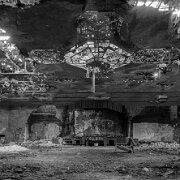
4 Vanity Ballroom, Detroit Michigan
The Vanity Ballroom, located in Detroit, Michigan, is a historic venue that holds a significant place in the city's cultural history. Opened in 1927, it was originally designed as a grand dance hall and a social gathering spot for Detroit's African American community. The venue quickly became renowned for its large, elegant ballroom, where patrons could enjoy live jazz and big band performances. Its ornate interior featured a stunning art deco design with intricate details, including chandeliers, decorative molding, and a spacious dance floor. The Vanity Ballroom became one of the top venues in Detroit during the 1930s and 1940s, regularly hosting some of the era’s most famous musicians, such as Duke Ellington, Ella Fitzgerald, and Cab Calloway. It was a popular destination for dancers and music lovers, contributing to the cultural vibrancy of Detroit's African American communities.
In the decades following its peak, the Vanity Ballroom began to decline, as changes in the music industry and the economy took a toll on the venue's viability. Despite this, the ballroom continued to be a symbol of Detroit's rich musical legacy. By the 1960s, the venue had transitioned to a less glamorous role, hosting more local events and small-scale performances. Although it closed its doors in the late 1970s, the Vanity Ballroom remains a cherished part of Detroit's history. Its significance as a space for cultural expression and its role in the development of jazz and rhythm & blues in the Motor City continue to be remembered by those who fondly recall its days as a premier destination for
The Vanity Ballroom, located in Detroit, Michigan, is a historic venue that holds a significant place in the city's cultural history. Opened in 1927, it was originally designed as a grand dance hall and a social gathering spot for Detroit's African American community. The venue quickly became renowned for its large, elegant ballroom, where patrons could enjoy live jazz and big band performances. Its ornate interior featured a stunning art deco design with intricate details, including chandeliers, decorative molding, and a spacious dance floor. The Vanity Ballroom became one of the top venues in Detroit during the 1930s and 1940s, regularly hosting some of the era’s most famous musicians, such as Duke Ellington, Ella Fitzgerald, and Cab Calloway. It was a popular destination for dancers and music lovers, contributing to the cultural vibrancy of Detroit's African American communities.
In the decades following its peak, the Vanity Ballroom began to decline, as changes in the music industry and the economy took a toll on the venue's viability. Despite this, the ballroom continued to be a symbol of Detroit's rich musical legacy. By the 1960s, the venue had transitioned to a less glamorous role, hosting more local events and small-scale performances. Although it closed its doors in the late 1970s, the Vanity Ballroom remains a cherished part of Detroit's history. Its significance as a space for cultural expression and its role in the development of jazz and rhythm & blues in the Motor City continue to be remembered by those who fondly recall its days as a premier destination for
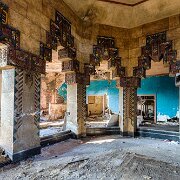
5 Vanity Ballroom, Detroit Michigan
The Vanity Ballroom, located in Detroit, Michigan, is a historic venue that holds a significant place in the city's cultural history. Opened in 1927, it was originally designed as a grand dance hall and a social gathering spot for Detroit's African American community. The venue quickly became renowned for its large, elegant ballroom, where patrons could enjoy live jazz and big band performances. Its ornate interior featured a stunning art deco design with intricate details, including chandeliers, decorative molding, and a spacious dance floor. The Vanity Ballroom became one of the top venues in Detroit during the 1930s and 1940s, regularly hosting some of the era’s most famous musicians, such as Duke Ellington, Ella Fitzgerald, and Cab Calloway. It was a popular destination for dancers and music lovers, contributing to the cultural vibrancy of Detroit's African American communities.
In the decades following its peak, the Vanity Ballroom began to decline, as changes in the music industry and the economy took a toll on the venue's viability. Despite this, the ballroom continued to be a symbol of Detroit's rich musical legacy. By the 1960s, the venue had transitioned to a less glamorous role, hosting more local events and small-scale performances. Although it closed its doors in the late 1970s, the Vanity Ballroom remains a cherished part of Detroit's history. Its significance as a space for cultural expression and its role in the development of jazz and rhythm & blues in the Motor City continue to be remembered by those who fondly recall its days as a premier destination for
The Vanity Ballroom, located in Detroit, Michigan, is a historic venue that holds a significant place in the city's cultural history. Opened in 1927, it was originally designed as a grand dance hall and a social gathering spot for Detroit's African American community. The venue quickly became renowned for its large, elegant ballroom, where patrons could enjoy live jazz and big band performances. Its ornate interior featured a stunning art deco design with intricate details, including chandeliers, decorative molding, and a spacious dance floor. The Vanity Ballroom became one of the top venues in Detroit during the 1930s and 1940s, regularly hosting some of the era’s most famous musicians, such as Duke Ellington, Ella Fitzgerald, and Cab Calloway. It was a popular destination for dancers and music lovers, contributing to the cultural vibrancy of Detroit's African American communities.
In the decades following its peak, the Vanity Ballroom began to decline, as changes in the music industry and the economy took a toll on the venue's viability. Despite this, the ballroom continued to be a symbol of Detroit's rich musical legacy. By the 1960s, the venue had transitioned to a less glamorous role, hosting more local events and small-scale performances. Although it closed its doors in the late 1970s, the Vanity Ballroom remains a cherished part of Detroit's history. Its significance as a space for cultural expression and its role in the development of jazz and rhythm & blues in the Motor City continue to be remembered by those who fondly recall its days as a premier destination for

6 Vanity Ballroom, Detroit Michigan
The Vanity Ballroom, located in Detroit, Michigan, is a historic venue that holds a significant place in the city's cultural history. Opened in 1927, it was originally designed as a grand dance hall and a social gathering spot for Detroit's African American community. The venue quickly became renowned for its large, elegant ballroom, where patrons could enjoy live jazz and big band performances. Its ornate interior featured a stunning art deco design with intricate details, including chandeliers, decorative molding, and a spacious dance floor. The Vanity Ballroom became one of the top venues in Detroit during the 1930s and 1940s, regularly hosting some of the era’s most famous musicians, such as Duke Ellington, Ella Fitzgerald, and Cab Calloway. It was a popular destination for dancers and music lovers, contributing to the cultural vibrancy of Detroit's African American communities.
In the decades following its peak, the Vanity Ballroom began to decline, as changes in the music industry and the economy took a toll on the venue's viability. Despite this, the ballroom continued to be a symbol of Detroit's rich musical legacy. By the 1960s, the venue had transitioned to a less glamorous role, hosting more local events and small-scale performances. Although it closed its doors in the late 1970s, the Vanity Ballroom remains a cherished part of Detroit's history. Its significance as a space for cultural expression and its role in the development of jazz and rhythm & blues in the Motor City continue to be remembered by those who fondly recall its days as a premier destination for
The Vanity Ballroom, located in Detroit, Michigan, is a historic venue that holds a significant place in the city's cultural history. Opened in 1927, it was originally designed as a grand dance hall and a social gathering spot for Detroit's African American community. The venue quickly became renowned for its large, elegant ballroom, where patrons could enjoy live jazz and big band performances. Its ornate interior featured a stunning art deco design with intricate details, including chandeliers, decorative molding, and a spacious dance floor. The Vanity Ballroom became one of the top venues in Detroit during the 1930s and 1940s, regularly hosting some of the era’s most famous musicians, such as Duke Ellington, Ella Fitzgerald, and Cab Calloway. It was a popular destination for dancers and music lovers, contributing to the cultural vibrancy of Detroit's African American communities.
In the decades following its peak, the Vanity Ballroom began to decline, as changes in the music industry and the economy took a toll on the venue's viability. Despite this, the ballroom continued to be a symbol of Detroit's rich musical legacy. By the 1960s, the venue had transitioned to a less glamorous role, hosting more local events and small-scale performances. Although it closed its doors in the late 1970s, the Vanity Ballroom remains a cherished part of Detroit's history. Its significance as a space for cultural expression and its role in the development of jazz and rhythm & blues in the Motor City continue to be remembered by those who fondly recall its days as a premier destination for
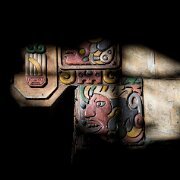
7 Vanity Ballroom, Detroit Michigan
The Vanity Ballroom, located in Detroit, Michigan, is a historic venue that holds a significant place in the city's cultural history. Opened in 1927, it was originally designed as a grand dance hall and a social gathering spot for Detroit's African American community. The venue quickly became renowned for its large, elegant ballroom, where patrons could enjoy live jazz and big band performances. Its ornate interior featured a stunning art deco design with intricate details, including chandeliers, decorative molding, and a spacious dance floor. The Vanity Ballroom became one of the top venues in Detroit during the 1930s and 1940s, regularly hosting some of the era’s most famous musicians, such as Duke Ellington, Ella Fitzgerald, and Cab Calloway. It was a popular destination for dancers and music lovers, contributing to the cultural vibrancy of Detroit's African American communities.
In the decades following its peak, the Vanity Ballroom began to decline, as changes in the music industry and the economy took a toll on the venue's viability. Despite this, the ballroom continued to be a symbol of Detroit's rich musical legacy. By the 1960s, the venue had transitioned to a less glamorous role, hosting more local events and small-scale performances. Although it closed its doors in the late 1970s, the Vanity Ballroom remains a cherished part of Detroit's history. Its significance as a space for cultural expression and its role in the development of jazz and rhythm & blues in the Motor City continue to be remembered by those who fondly recall its days as a premier destination for
The Vanity Ballroom, located in Detroit, Michigan, is a historic venue that holds a significant place in the city's cultural history. Opened in 1927, it was originally designed as a grand dance hall and a social gathering spot for Detroit's African American community. The venue quickly became renowned for its large, elegant ballroom, where patrons could enjoy live jazz and big band performances. Its ornate interior featured a stunning art deco design with intricate details, including chandeliers, decorative molding, and a spacious dance floor. The Vanity Ballroom became one of the top venues in Detroit during the 1930s and 1940s, regularly hosting some of the era’s most famous musicians, such as Duke Ellington, Ella Fitzgerald, and Cab Calloway. It was a popular destination for dancers and music lovers, contributing to the cultural vibrancy of Detroit's African American communities.
In the decades following its peak, the Vanity Ballroom began to decline, as changes in the music industry and the economy took a toll on the venue's viability. Despite this, the ballroom continued to be a symbol of Detroit's rich musical legacy. By the 1960s, the venue had transitioned to a less glamorous role, hosting more local events and small-scale performances. Although it closed its doors in the late 1970s, the Vanity Ballroom remains a cherished part of Detroit's history. Its significance as a space for cultural expression and its role in the development of jazz and rhythm & blues in the Motor City continue to be remembered by those who fondly recall its days as a premier destination for
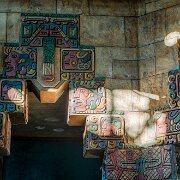
8 Vanity Ballroom, Detroit Michigan
The Vanity Ballroom, located in Detroit, Michigan, is a historic venue that holds a significant place in the city's cultural history. Opened in 1927, it was originally designed as a grand dance hall and a social gathering spot for Detroit's African American community. The venue quickly became renowned for its large, elegant ballroom, where patrons could enjoy live jazz and big band performances. Its ornate interior featured a stunning art deco design with intricate details, including chandeliers, decorative molding, and a spacious dance floor. The Vanity Ballroom became one of the top venues in Detroit during the 1930s and 1940s, regularly hosting some of the era’s most famous musicians, such as Duke Ellington, Ella Fitzgerald, and Cab Calloway. It was a popular destination for dancers and music lovers, contributing to the cultural vibrancy of Detroit's African American communities.
In the decades following its peak, the Vanity Ballroom began to decline, as changes in the music industry and the economy took a toll on the venue's viability. Despite this, the ballroom continued to be a symbol of Detroit's rich musical legacy. By the 1960s, the venue had transitioned to a less glamorous role, hosting more local events and small-scale performances. Although it closed its doors in the late 1970s, the Vanity Ballroom remains a cherished part of Detroit's history. Its significance as a space for cultural expression and its role in the development of jazz and rhythm & blues in the Motor City continue to be remembered by those who fondly recall its days as a premier destination for
The Vanity Ballroom, located in Detroit, Michigan, is a historic venue that holds a significant place in the city's cultural history. Opened in 1927, it was originally designed as a grand dance hall and a social gathering spot for Detroit's African American community. The venue quickly became renowned for its large, elegant ballroom, where patrons could enjoy live jazz and big band performances. Its ornate interior featured a stunning art deco design with intricate details, including chandeliers, decorative molding, and a spacious dance floor. The Vanity Ballroom became one of the top venues in Detroit during the 1930s and 1940s, regularly hosting some of the era’s most famous musicians, such as Duke Ellington, Ella Fitzgerald, and Cab Calloway. It was a popular destination for dancers and music lovers, contributing to the cultural vibrancy of Detroit's African American communities.
In the decades following its peak, the Vanity Ballroom began to decline, as changes in the music industry and the economy took a toll on the venue's viability. Despite this, the ballroom continued to be a symbol of Detroit's rich musical legacy. By the 1960s, the venue had transitioned to a less glamorous role, hosting more local events and small-scale performances. Although it closed its doors in the late 1970s, the Vanity Ballroom remains a cherished part of Detroit's history. Its significance as a space for cultural expression and its role in the development of jazz and rhythm & blues in the Motor City continue to be remembered by those who fondly recall its days as a premier destination for
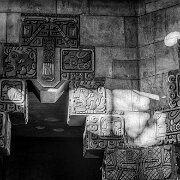
9 Vanity Ballroom, Detroit Michigan
The Vanity Ballroom, located in Detroit, Michigan, is a historic venue that holds a significant place in the city's cultural history. Opened in 1927, it was originally designed as a grand dance hall and a social gathering spot for Detroit's African American community. The venue quickly became renowned for its large, elegant ballroom, where patrons could enjoy live jazz and big band performances. Its ornate interior featured a stunning art deco design with intricate details, including chandeliers, decorative molding, and a spacious dance floor. The Vanity Ballroom became one of the top venues in Detroit during the 1930s and 1940s, regularly hosting some of the era’s most famous musicians, such as Duke Ellington, Ella Fitzgerald, and Cab Calloway. It was a popular destination for dancers and music lovers, contributing to the cultural vibrancy of Detroit's African American communities.
In the decades following its peak, the Vanity Ballroom began to decline, as changes in the music industry and the economy took a toll on the venue's viability. Despite this, the ballroom continued to be a symbol of Detroit's rich musical legacy. By the 1960s, the venue had transitioned to a less glamorous role, hosting more local events and small-scale performances. Although it closed its doors in the late 1970s, the Vanity Ballroom remains a cherished part of Detroit's history. Its significance as a space for cultural expression and its role in the development of jazz and rhythm & blues in the Motor City continue to be remembered by those who fondly recall its days as a premier destination for
The Vanity Ballroom, located in Detroit, Michigan, is a historic venue that holds a significant place in the city's cultural history. Opened in 1927, it was originally designed as a grand dance hall and a social gathering spot for Detroit's African American community. The venue quickly became renowned for its large, elegant ballroom, where patrons could enjoy live jazz and big band performances. Its ornate interior featured a stunning art deco design with intricate details, including chandeliers, decorative molding, and a spacious dance floor. The Vanity Ballroom became one of the top venues in Detroit during the 1930s and 1940s, regularly hosting some of the era’s most famous musicians, such as Duke Ellington, Ella Fitzgerald, and Cab Calloway. It was a popular destination for dancers and music lovers, contributing to the cultural vibrancy of Detroit's African American communities.
In the decades following its peak, the Vanity Ballroom began to decline, as changes in the music industry and the economy took a toll on the venue's viability. Despite this, the ballroom continued to be a symbol of Detroit's rich musical legacy. By the 1960s, the venue had transitioned to a less glamorous role, hosting more local events and small-scale performances. Although it closed its doors in the late 1970s, the Vanity Ballroom remains a cherished part of Detroit's history. Its significance as a space for cultural expression and its role in the development of jazz and rhythm & blues in the Motor City continue to be remembered by those who fondly recall its days as a premier destination for
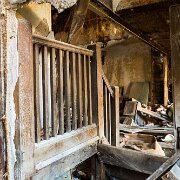
10 Vanity Ballroom, Detroit Michigan
The Vanity Ballroom, located in Detroit, Michigan, is a historic venue that holds a significant place in the city's cultural history. Opened in 1927, it was originally designed as a grand dance hall and a social gathering spot for Detroit's African American community. The venue quickly became renowned for its large, elegant ballroom, where patrons could enjoy live jazz and big band performances. Its ornate interior featured a stunning art deco design with intricate details, including chandeliers, decorative molding, and a spacious dance floor. The Vanity Ballroom became one of the top venues in Detroit during the 1930s and 1940s, regularly hosting some of the era’s most famous musicians, such as Duke Ellington, Ella Fitzgerald, and Cab Calloway. It was a popular destination for dancers and music lovers, contributing to the cultural vibrancy of Detroit's African American communities.
In the decades following its peak, the Vanity Ballroom began to decline, as changes in the music industry and the economy took a toll on the venue's viability. Despite this, the ballroom continued to be a symbol of Detroit's rich musical legacy. By the 1960s, the venue had transitioned to a less glamorous role, hosting more local events and small-scale performances. Although it closed its doors in the late 1970s, the Vanity Ballroom remains a cherished part of Detroit's history. Its significance as a space for cultural expression and its role in the development of jazz and rhythm & blues in the Motor City continue to be remembered by those who fondly recall its days as a premier destination for
The Vanity Ballroom, located in Detroit, Michigan, is a historic venue that holds a significant place in the city's cultural history. Opened in 1927, it was originally designed as a grand dance hall and a social gathering spot for Detroit's African American community. The venue quickly became renowned for its large, elegant ballroom, where patrons could enjoy live jazz and big band performances. Its ornate interior featured a stunning art deco design with intricate details, including chandeliers, decorative molding, and a spacious dance floor. The Vanity Ballroom became one of the top venues in Detroit during the 1930s and 1940s, regularly hosting some of the era’s most famous musicians, such as Duke Ellington, Ella Fitzgerald, and Cab Calloway. It was a popular destination for dancers and music lovers, contributing to the cultural vibrancy of Detroit's African American communities.
In the decades following its peak, the Vanity Ballroom began to decline, as changes in the music industry and the economy took a toll on the venue's viability. Despite this, the ballroom continued to be a symbol of Detroit's rich musical legacy. By the 1960s, the venue had transitioned to a less glamorous role, hosting more local events and small-scale performances. Although it closed its doors in the late 1970s, the Vanity Ballroom remains a cherished part of Detroit's history. Its significance as a space for cultural expression and its role in the development of jazz and rhythm & blues in the Motor City continue to be remembered by those who fondly recall its days as a premier destination for
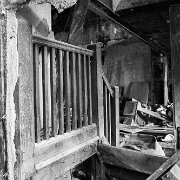
11 Vanity Ballroom, Detroit Michigan
The Vanity Ballroom, located in Detroit, Michigan, is a historic venue that holds a significant place in the city's cultural history. Opened in 1927, it was originally designed as a grand dance hall and a social gathering spot for Detroit's African American community. The venue quickly became renowned for its large, elegant ballroom, where patrons could enjoy live jazz and big band performances. Its ornate interior featured a stunning art deco design with intricate details, including chandeliers, decorative molding, and a spacious dance floor. The Vanity Ballroom became one of the top venues in Detroit during the 1930s and 1940s, regularly hosting some of the era’s most famous musicians, such as Duke Ellington, Ella Fitzgerald, and Cab Calloway. It was a popular destination for dancers and music lovers, contributing to the cultural vibrancy of Detroit's African American communities.
In the decades following its peak, the Vanity Ballroom began to decline, as changes in the music industry and the economy took a toll on the venue's viability. Despite this, the ballroom continued to be a symbol of Detroit's rich musical legacy. By the 1960s, the venue had transitioned to a less glamorous role, hosting more local events and small-scale performances. Although it closed its doors in the late 1970s, the Vanity Ballroom remains a cherished part of Detroit's history. Its significance as a space for cultural expression and its role in the development of jazz and rhythm & blues in the Motor City continue to be remembered by those who fondly recall its days as a premier destination for
The Vanity Ballroom, located in Detroit, Michigan, is a historic venue that holds a significant place in the city's cultural history. Opened in 1927, it was originally designed as a grand dance hall and a social gathering spot for Detroit's African American community. The venue quickly became renowned for its large, elegant ballroom, where patrons could enjoy live jazz and big band performances. Its ornate interior featured a stunning art deco design with intricate details, including chandeliers, decorative molding, and a spacious dance floor. The Vanity Ballroom became one of the top venues in Detroit during the 1930s and 1940s, regularly hosting some of the era’s most famous musicians, such as Duke Ellington, Ella Fitzgerald, and Cab Calloway. It was a popular destination for dancers and music lovers, contributing to the cultural vibrancy of Detroit's African American communities.
In the decades following its peak, the Vanity Ballroom began to decline, as changes in the music industry and the economy took a toll on the venue's viability. Despite this, the ballroom continued to be a symbol of Detroit's rich musical legacy. By the 1960s, the venue had transitioned to a less glamorous role, hosting more local events and small-scale performances. Although it closed its doors in the late 1970s, the Vanity Ballroom remains a cherished part of Detroit's history. Its significance as a space for cultural expression and its role in the development of jazz and rhythm & blues in the Motor City continue to be remembered by those who fondly recall its days as a premier destination for

12 Vanity Ballroom, Detroit Michigan
The Vanity Ballroom, located in Detroit, Michigan, is a historic venue that holds a significant place in the city's cultural history. Opened in 1927, it was originally designed as a grand dance hall and a social gathering spot for Detroit's African American community. The venue quickly became renowned for its large, elegant ballroom, where patrons could enjoy live jazz and big band performances. Its ornate interior featured a stunning art deco design with intricate details, including chandeliers, decorative molding, and a spacious dance floor. The Vanity Ballroom became one of the top venues in Detroit during the 1930s and 1940s, regularly hosting some of the era’s most famous musicians, such as Duke Ellington, Ella Fitzgerald, and Cab Calloway. It was a popular destination for dancers and music lovers, contributing to the cultural vibrancy of Detroit's African American communities.
In the decades following its peak, the Vanity Ballroom began to decline, as changes in the music industry and the economy took a toll on the venue's viability. Despite this, the ballroom continued to be a symbol of Detroit's rich musical legacy. By the 1960s, the venue had transitioned to a less glamorous role, hosting more local events and small-scale performances. Although it closed its doors in the late 1970s, the Vanity Ballroom remains a cherished part of Detroit's history. Its significance as a space for cultural expression and its role in the development of jazz and rhythm & blues in the Motor City continue to be remembered by those who fondly recall its days as a premier destination for
The Vanity Ballroom, located in Detroit, Michigan, is a historic venue that holds a significant place in the city's cultural history. Opened in 1927, it was originally designed as a grand dance hall and a social gathering spot for Detroit's African American community. The venue quickly became renowned for its large, elegant ballroom, where patrons could enjoy live jazz and big band performances. Its ornate interior featured a stunning art deco design with intricate details, including chandeliers, decorative molding, and a spacious dance floor. The Vanity Ballroom became one of the top venues in Detroit during the 1930s and 1940s, regularly hosting some of the era’s most famous musicians, such as Duke Ellington, Ella Fitzgerald, and Cab Calloway. It was a popular destination for dancers and music lovers, contributing to the cultural vibrancy of Detroit's African American communities.
In the decades following its peak, the Vanity Ballroom began to decline, as changes in the music industry and the economy took a toll on the venue's viability. Despite this, the ballroom continued to be a symbol of Detroit's rich musical legacy. By the 1960s, the venue had transitioned to a less glamorous role, hosting more local events and small-scale performances. Although it closed its doors in the late 1970s, the Vanity Ballroom remains a cherished part of Detroit's history. Its significance as a space for cultural expression and its role in the development of jazz and rhythm & blues in the Motor City continue to be remembered by those who fondly recall its days as a premier destination for
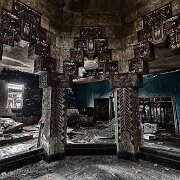
13 Vanity Ballroom, Detroit Michigan
The Vanity Ballroom, located in Detroit, Michigan, is a historic venue that holds a significant place in the city's cultural history. Opened in 1927, it was originally designed as a grand dance hall and a social gathering spot for Detroit's African American community. The venue quickly became renowned for its large, elegant ballroom, where patrons could enjoy live jazz and big band performances. Its ornate interior featured a stunning art deco design with intricate details, including chandeliers, decorative molding, and a spacious dance floor. The Vanity Ballroom became one of the top venues in Detroit during the 1930s and 1940s, regularly hosting some of the era’s most famous musicians, such as Duke Ellington, Ella Fitzgerald, and Cab Calloway. It was a popular destination for dancers and music lovers, contributing to the cultural vibrancy of Detroit's African American communities.
In the decades following its peak, the Vanity Ballroom began to decline, as changes in the music industry and the economy took a toll on the venue's viability. Despite this, the ballroom continued to be a symbol of Detroit's rich musical legacy. By the 1960s, the venue had transitioned to a less glamorous role, hosting more local events and small-scale performances. Although it closed its doors in the late 1970s, the Vanity Ballroom remains a cherished part of Detroit's history. Its significance as a space for cultural expression and its role in the development of jazz and rhythm & blues in the Motor City continue to be remembered by those who fondly recall its days as a premier destination for
The Vanity Ballroom, located in Detroit, Michigan, is a historic venue that holds a significant place in the city's cultural history. Opened in 1927, it was originally designed as a grand dance hall and a social gathering spot for Detroit's African American community. The venue quickly became renowned for its large, elegant ballroom, where patrons could enjoy live jazz and big band performances. Its ornate interior featured a stunning art deco design with intricate details, including chandeliers, decorative molding, and a spacious dance floor. The Vanity Ballroom became one of the top venues in Detroit during the 1930s and 1940s, regularly hosting some of the era’s most famous musicians, such as Duke Ellington, Ella Fitzgerald, and Cab Calloway. It was a popular destination for dancers and music lovers, contributing to the cultural vibrancy of Detroit's African American communities.
In the decades following its peak, the Vanity Ballroom began to decline, as changes in the music industry and the economy took a toll on the venue's viability. Despite this, the ballroom continued to be a symbol of Detroit's rich musical legacy. By the 1960s, the venue had transitioned to a less glamorous role, hosting more local events and small-scale performances. Although it closed its doors in the late 1970s, the Vanity Ballroom remains a cherished part of Detroit's history. Its significance as a space for cultural expression and its role in the development of jazz and rhythm & blues in the Motor City continue to be remembered by those who fondly recall its days as a premier destination for
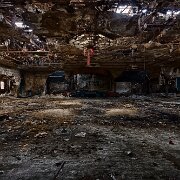
14 Vanity Ballroom, Detroit Michigan
The Vanity Ballroom, located in Detroit, Michigan, is a historic venue that holds a significant place in the city's cultural history. Opened in 1927, it was originally designed as a grand dance hall and a social gathering spot for Detroit's African American community. The venue quickly became renowned for its large, elegant ballroom, where patrons could enjoy live jazz and big band performances. Its ornate interior featured a stunning art deco design with intricate details, including chandeliers, decorative molding, and a spacious dance floor. The Vanity Ballroom became one of the top venues in Detroit during the 1930s and 1940s, regularly hosting some of the era’s most famous musicians, such as Duke Ellington, Ella Fitzgerald, and Cab Calloway. It was a popular destination for dancers and music lovers, contributing to the cultural vibrancy of Detroit's African American communities.
In the decades following its peak, the Vanity Ballroom began to decline, as changes in the music industry and the economy took a toll on the venue's viability. Despite this, the ballroom continued to be a symbol of Detroit's rich musical legacy. By the 1960s, the venue had transitioned to a less glamorous role, hosting more local events and small-scale performances. Although it closed its doors in the late 1970s, the Vanity Ballroom remains a cherished part of Detroit's history. Its significance as a space for cultural expression and its role in the development of jazz and rhythm & blues in the Motor City continue to be remembered by those who fondly recall its days as a premier destination for
The Vanity Ballroom, located in Detroit, Michigan, is a historic venue that holds a significant place in the city's cultural history. Opened in 1927, it was originally designed as a grand dance hall and a social gathering spot for Detroit's African American community. The venue quickly became renowned for its large, elegant ballroom, where patrons could enjoy live jazz and big band performances. Its ornate interior featured a stunning art deco design with intricate details, including chandeliers, decorative molding, and a spacious dance floor. The Vanity Ballroom became one of the top venues in Detroit during the 1930s and 1940s, regularly hosting some of the era’s most famous musicians, such as Duke Ellington, Ella Fitzgerald, and Cab Calloway. It was a popular destination for dancers and music lovers, contributing to the cultural vibrancy of Detroit's African American communities.
In the decades following its peak, the Vanity Ballroom began to decline, as changes in the music industry and the economy took a toll on the venue's viability. Despite this, the ballroom continued to be a symbol of Detroit's rich musical legacy. By the 1960s, the venue had transitioned to a less glamorous role, hosting more local events and small-scale performances. Although it closed its doors in the late 1970s, the Vanity Ballroom remains a cherished part of Detroit's history. Its significance as a space for cultural expression and its role in the development of jazz and rhythm & blues in the Motor City continue to be remembered by those who fondly recall its days as a premier destination for
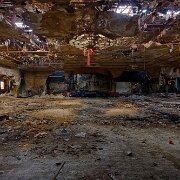
15 Vanity Ballroom, Detroit Michigan
The Vanity Ballroom, located in Detroit, Michigan, is a historic venue that holds a significant place in the city's cultural history. Opened in 1927, it was originally designed as a grand dance hall and a social gathering spot for Detroit's African American community. The venue quickly became renowned for its large, elegant ballroom, where patrons could enjoy live jazz and big band performances. Its ornate interior featured a stunning art deco design with intricate details, including chandeliers, decorative molding, and a spacious dance floor. The Vanity Ballroom became one of the top venues in Detroit during the 1930s and 1940s, regularly hosting some of the era’s most famous musicians, such as Duke Ellington, Ella Fitzgerald, and Cab Calloway. It was a popular destination for dancers and music lovers, contributing to the cultural vibrancy of Detroit's African American communities.
In the decades following its peak, the Vanity Ballroom began to decline, as changes in the music industry and the economy took a toll on the venue's viability. Despite this, the ballroom continued to be a symbol of Detroit's rich musical legacy. By the 1960s, the venue had transitioned to a less glamorous role, hosting more local events and small-scale performances. Although it closed its doors in the late 1970s, the Vanity Ballroom remains a cherished part of Detroit's history. Its significance as a space for cultural expression and its role in the development of jazz and rhythm & blues in the Motor City continue to be remembered by those who fondly recall its days as a premier destination for
The Vanity Ballroom, located in Detroit, Michigan, is a historic venue that holds a significant place in the city's cultural history. Opened in 1927, it was originally designed as a grand dance hall and a social gathering spot for Detroit's African American community. The venue quickly became renowned for its large, elegant ballroom, where patrons could enjoy live jazz and big band performances. Its ornate interior featured a stunning art deco design with intricate details, including chandeliers, decorative molding, and a spacious dance floor. The Vanity Ballroom became one of the top venues in Detroit during the 1930s and 1940s, regularly hosting some of the era’s most famous musicians, such as Duke Ellington, Ella Fitzgerald, and Cab Calloway. It was a popular destination for dancers and music lovers, contributing to the cultural vibrancy of Detroit's African American communities.
In the decades following its peak, the Vanity Ballroom began to decline, as changes in the music industry and the economy took a toll on the venue's viability. Despite this, the ballroom continued to be a symbol of Detroit's rich musical legacy. By the 1960s, the venue had transitioned to a less glamorous role, hosting more local events and small-scale performances. Although it closed its doors in the late 1970s, the Vanity Ballroom remains a cherished part of Detroit's history. Its significance as a space for cultural expression and its role in the development of jazz and rhythm & blues in the Motor City continue to be remembered by those who fondly recall its days as a premier destination for
Vanity Ballroom